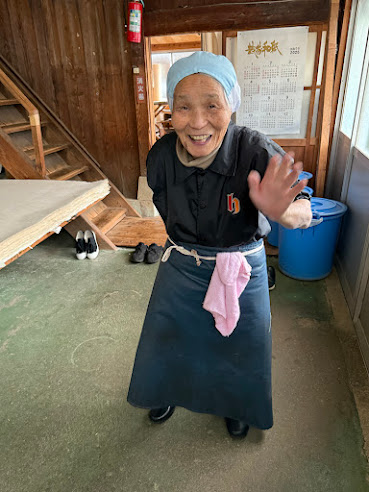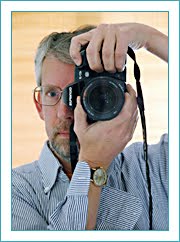From Kanazawa, I traveled to Echizen with a vague notion of seeing some of the traditional papermaking workshops there. Echizen has been a center of papermaking for more than 1,200 years. There were once more than 100 small workshops in the area, but I've been told there are now fewer than 50. The remaining shops continue to make paper by hand using techniques that have been handed down for generations.
Traveling alone and without a laid-out itinerary can be pleasurable, but, sometimes, it's best to call ahead. Because I had made no appointments I found myself wandering through one of the villages just outside Echizen peering in open windows at some of the mills, which wasn't very satisfying. A heavy downpour didn't help.
By coincidence, on my way to my hotel I happened to stop the car I rented next to a rice paddy with a Japanese Green Pheasant sitting in it – a striking bird, apparently found only in central Honshu. Also present were many Grey Herons. At the car rental place I was initially turned away. They had no available cars. I should have made a reservation, but, eventually, they found one for me.
I first stopped at Otaki Jinja, a large shrine near the papermaking workshops. I walked the grounds and then took a path along a small stream that eventually led to a concrete dam. I was hoping to see birds again, but found only another Grey Wagtail. A guide at the shrine kindly took me to one of the nearby paper mills, but the people there had finished work for the day, so there was little to see. The shrine is interesting for its architecture. It is said to have the most complex roof design of any in Japan.
Happily, the proprietor of Guest House Kizuna, where I stayed, was able to get me an appointment to visit Iwano Heizaburo Seisakusho, the largest workshop in the area the following morning (the largest maker of handmade paper in Japan but still a fairly small operation). I spent an hour at the mill the morning of my departure for Kyoto, hosted by 80-year-old Akiko Tamamura who told me she had been making paper there for 63 years – almost as long as I've been alive.
I got to see the entire handmade paper making process, from raw materials (mainly gampi, kozo, and mitsumata, some domestically produced, some imported) to finished sheets ready for shipment. The care with which each sheet is made is impressive. Slight imperfections in the pulp are removed by hand. It takes years of experience to make sheets of a uniform thickness because the consistency of the pulp and the gelatin-like binder used (derived from tree bark) differs from season to season and from day to day and is sensitive also to temperature fluctuations. I saw a woman measuring the thickness of a sheet of finished paper with a micrometer.
I noticed that mostly women were doing the work of agitating the pulp in the large wooden frames the paper is laid in but was told that pretty much everyone in the factory is capable of doing every job required in the papermaking process. Iwano Seisakusho specializes in large sheets. The very largest sheets require eight people to handle the wooden frames, although most of the work I observed was being done by a pair of workers. A very interesting morning!






























